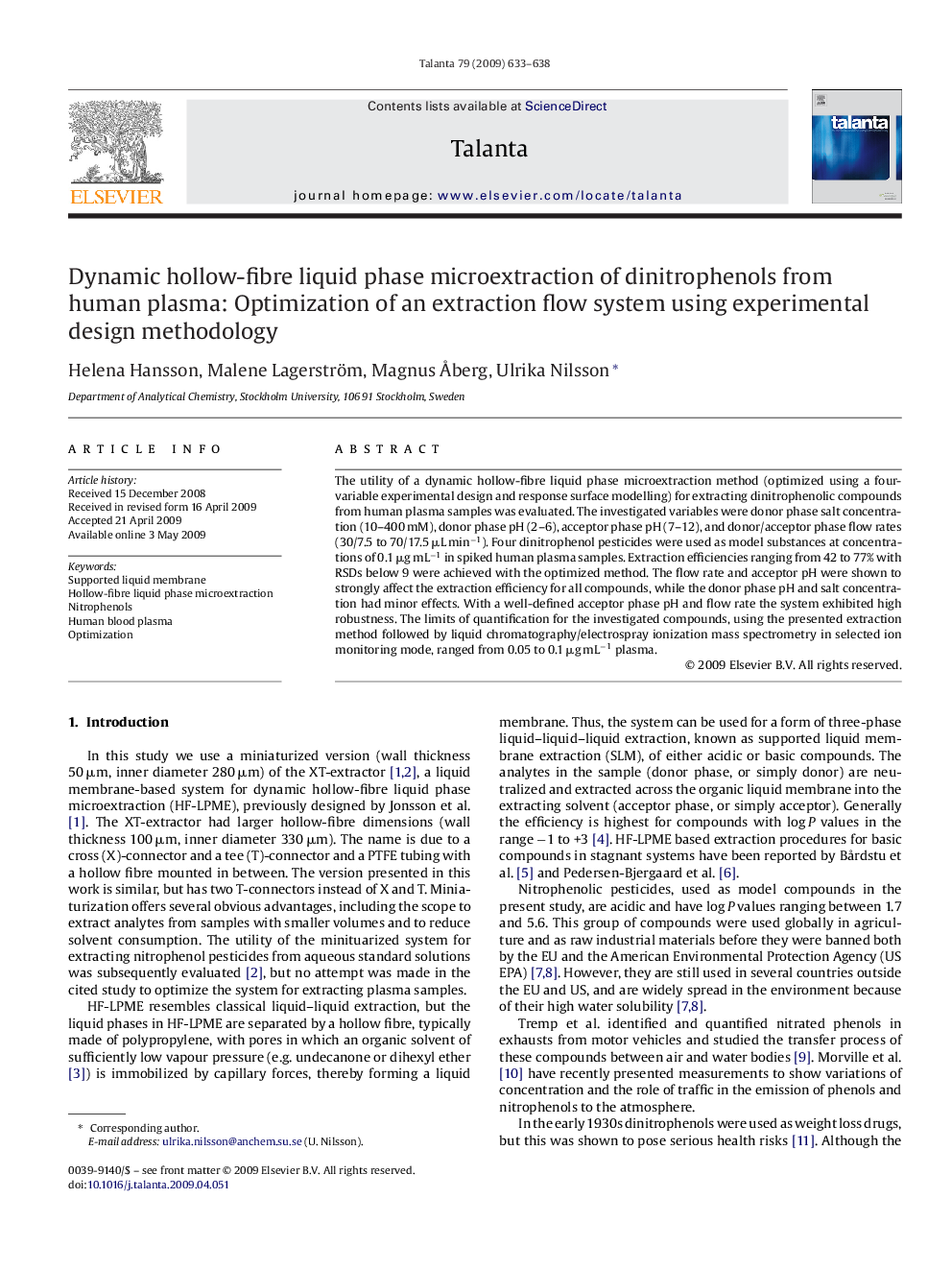| Article ID | Journal | Published Year | Pages | File Type |
|---|---|---|---|---|
| 10559611 | Talanta | 2009 | 6 Pages |
Abstract
The utility of a dynamic hollow-fibre liquid phase microextraction method (optimized using a four-variable experimental design and response surface modelling) for extracting dinitrophenolic compounds from human plasma samples was evaluated. The investigated variables were donor phase salt concentration (10-400 mM), donor phase pH (2-6), acceptor phase pH (7-12), and donor/acceptor phase flow rates (30/7.5 to 70/17.5 μL minâ1). Four dinitrophenol pesticides were used as model substances at concentrations of 0.1 μg mLâ1 in spiked human plasma samples. Extraction efficiencies ranging from 42 to 77% with RSDs below 9 were achieved with the optimized method. The flow rate and acceptor pH were shown to strongly affect the extraction efficiency for all compounds, while the donor phase pH and salt concentration had minor effects. With a well-defined acceptor phase pH and flow rate the system exhibited high robustness. The limits of quantification for the investigated compounds, using the presented extraction method followed by liquid chromatography/electrospray ionization mass spectrometry in selected ion monitoring mode, ranged from 0.05 to 0.1 μg mLâ1 plasma.
Related Topics
Physical Sciences and Engineering
Chemistry
Analytical Chemistry
Authors
Helena Hansson, Malene Lagerström, Magnus Ã
berg, Ulrika Nilsson,
